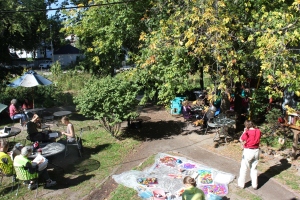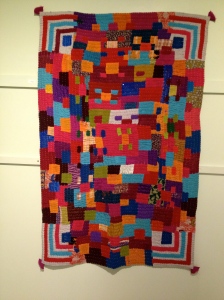Working with a community can be a challenge, but it can really be worth the time and effort that you put into it. The idea seems so natural, you go to a public space tell people that there will be free supplies and instruction and that the exchange of ideas is welcome, you invite everyone with out prejudges and let the magic happen. The reality of community work is much different.
The reality of working with and within a community is that everyone is busy, they have set schedules and plans, they need time to plan, information, support to attend, and to feel like they have ownership of the idea or event. And if something is NEW then how will they know it will be a success? Taking a risk in front of others can be scary. So as an artist working with community groups you may find yourself sitting alone with supplies and gear for hours, you might end up talking to 30 people and getting 3 to take the risk with their time and ideas. Or the other extreme may happen, you plan for at the most 20 people to show up and then 50 people are there excited and busy and you realize that your workshop is scheduled to go one for another hour, how many more people can you accommodate (this is the best problem to have).
This project had its moments that fell into each category, fortunately with lots of planning and coordinating the slow and busy moments were all successful.
Just over 50 people participated in different parts of this project from dyeing fabric to quilting, from piecing the quilt to documenting it. In addition another 100+ people watched different parts of the project develop, talked with participants, and watched demos.
Tips for working in a community:
Partner up! Have other people help reach out for you, use space or supplies, or even experts. Connecting people with their community benefits everyone, many businesses are happy to help send out emails or post flyers or even share space, this is much better than a donation of supplies of money!
Show up! You say your going to be there, be there. A few years ago I worked with a new group of teenagers and they were skeptical, people showing up once or twice and then disappearing had burned them before. I showed up twice a week for 4 weeks and sat with supplies and ideas before they trusted me. It was followed by a deep long lasting 2 year relationship. Totally worth my investment in time.
Be prepared! That’s right you could have 2 people show up, but it could be 200, so be ready.
Celebrate your effort! Even if no one shows up, get yourself a cupcake, don’t lose heart.


















